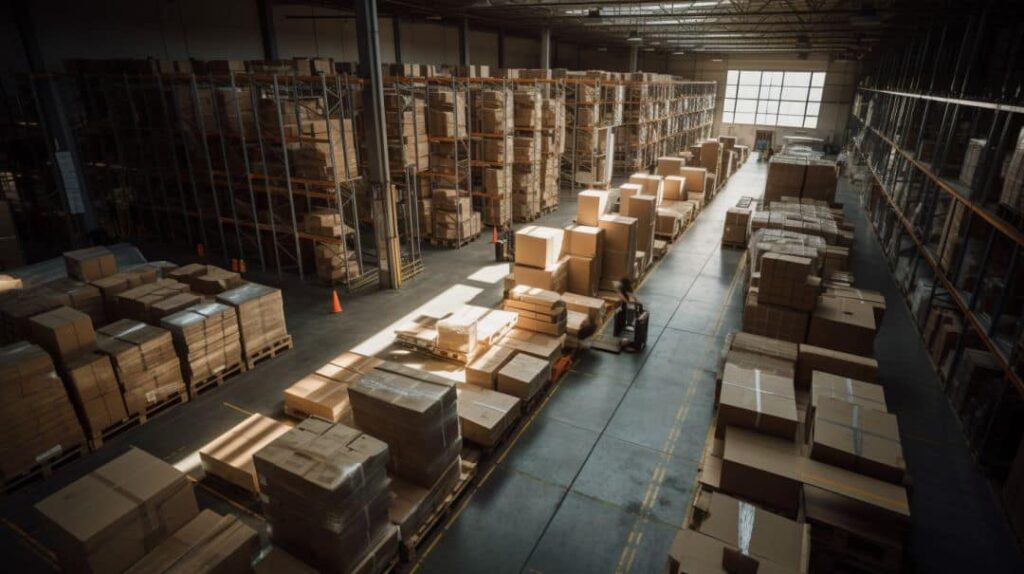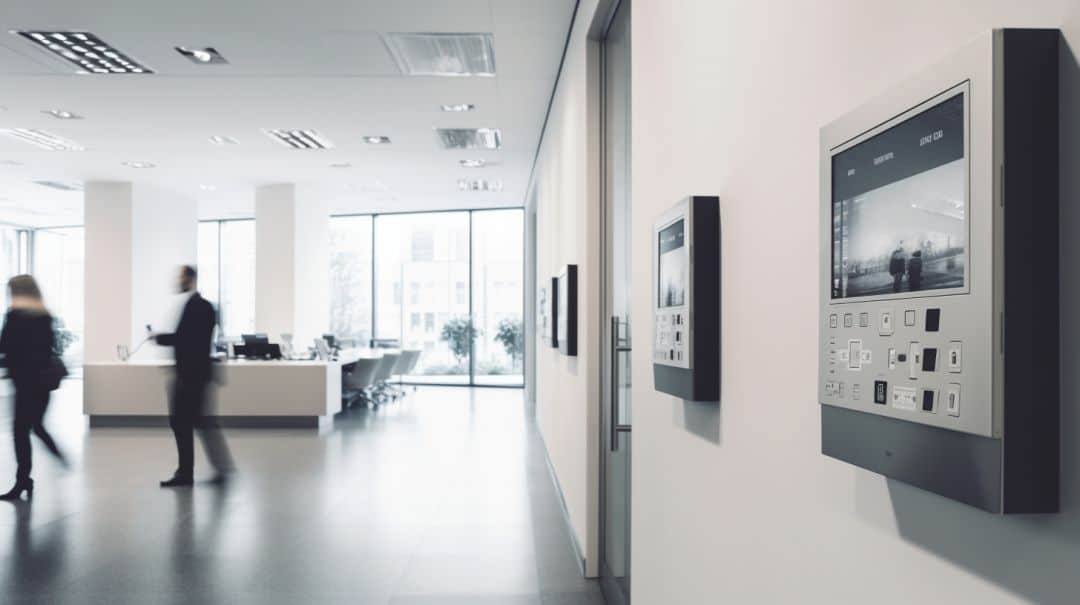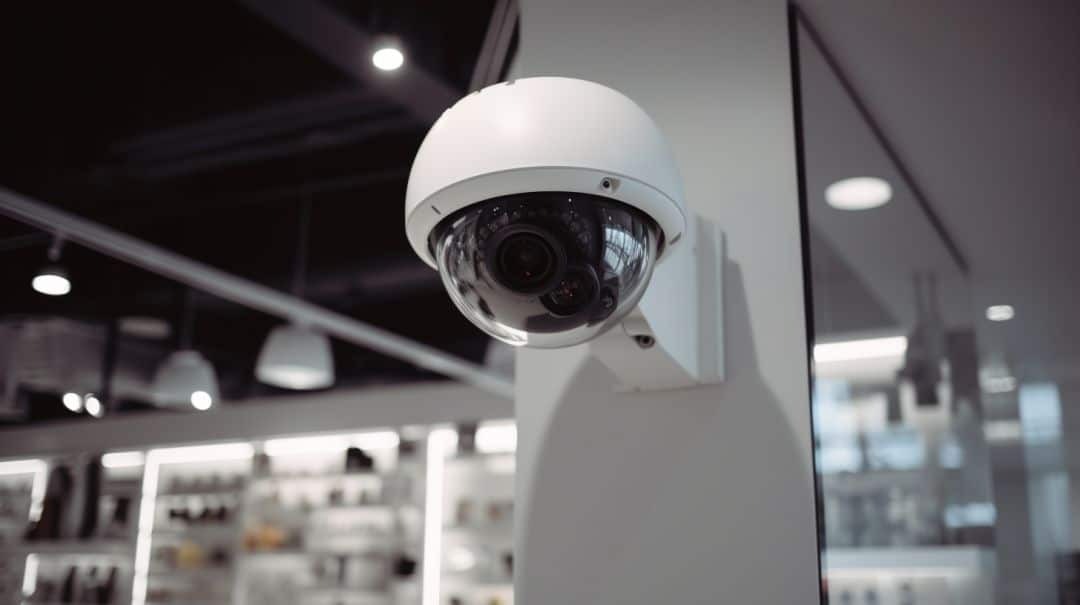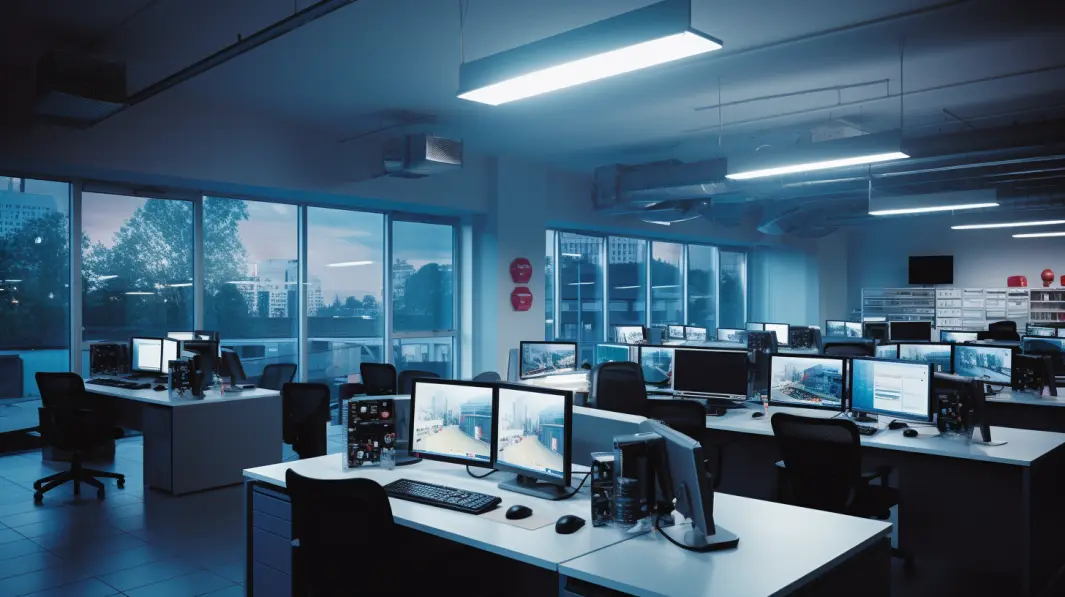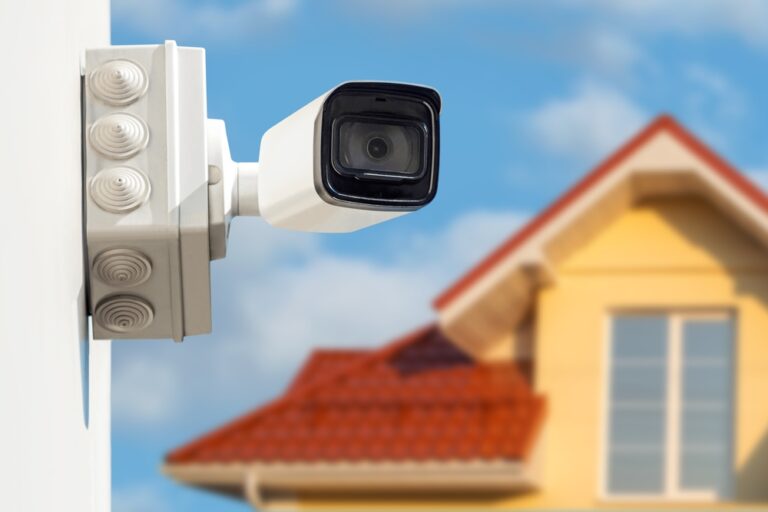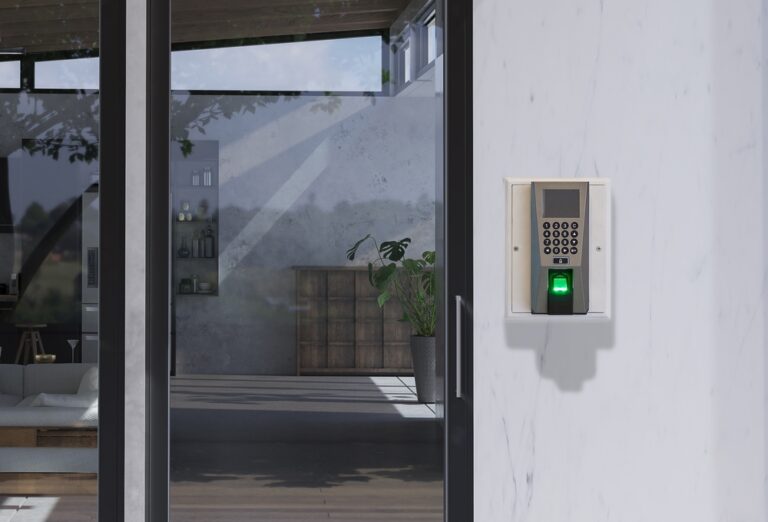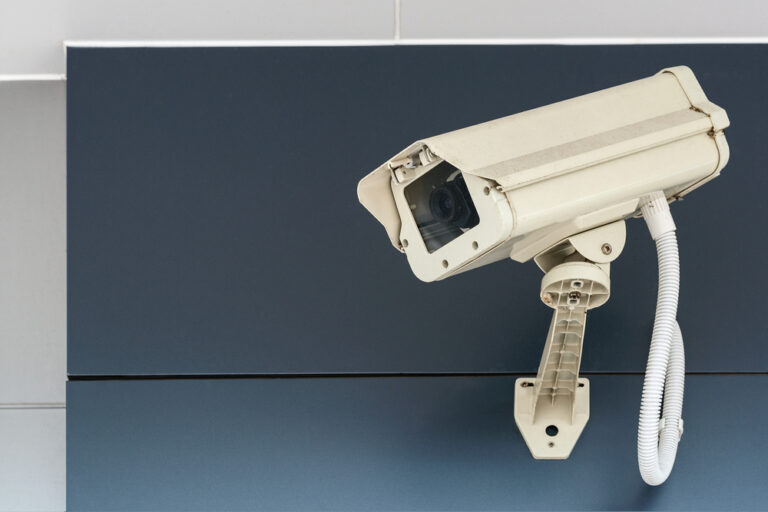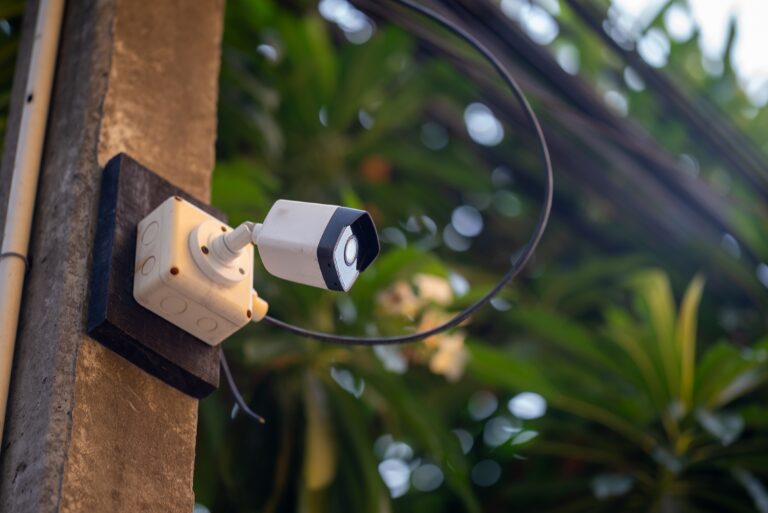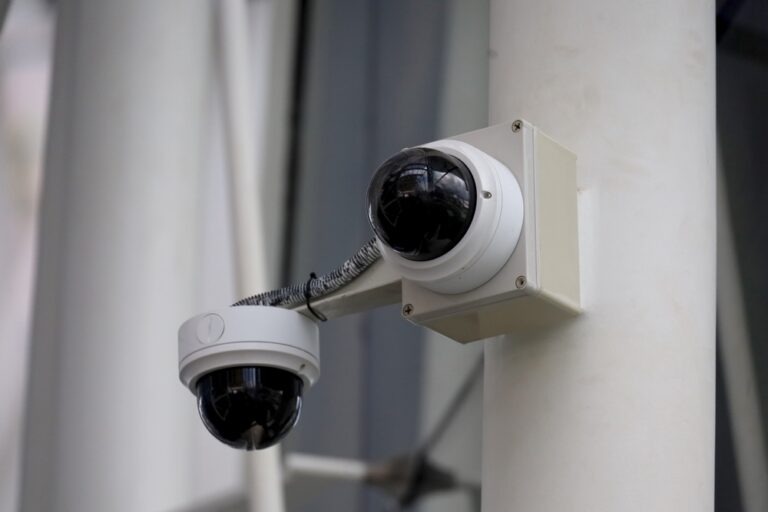- 1) Why Warehouse Security is Important
- 2) Types of Warehouse Security Cameras
- 3) Components of a Warehouse Security System
- 4) Benefits of a Warehouse Security Camera System
- 5) Types of Threats in Warehouses
- 6) How Warehouse Security Cameras Work
- 7) Key Features to Consider When Choosing a Warehouse Security Camera System
- 8) Top Warehouse Security Camera Systems
- 9) How Warehouse Security Cameras Can Improve Site Security, Performance, and ROI
- 10) Conclusion
- 11) FAQs
Warehouses and distribution centers handle millions of dollars in valuable inventory every day. With so much on the line, warehouse managers need to take every precaution to protect their assets. One of the most critical elements of a robust warehouse security plan is a network of high-definition (HD) security cameras.
| Top 5 Key Takeaways |
|---|
| 1. High-definition security cameras provide unmatched visibility into warehouse activities through features like low-light imaging, motion tracking and remote access. |
| 2. A robust warehouse security system should integrate cameras with alarm systems, access control, lighting and inventory management platforms. |
| 3. Strategically placed IP cameras with ruggedized designs can withstand the challenging conditions within warehouses. |
| 4. Proper security camera placement eliminates blind spots and deters theft at key locations like loading docks, ingress points and storage aisles. |
| 5. Security cameras improve warehouse ROI through loss prevention, enhanced productivity, insurance savings and optimized operations. |
HD security cameras provide unparalleled visibility into all areas of your facility. With an intricate system of different camera types, you can monitor every corner from receiving docks to inventory aisles. These cameras capture critical details that standard definition cameras would miss.
HD cameras are also optimized for challenging warehouse environments. They can withstand dust, extreme temperatures, and physical impacts. Advanced cameras also have low-light and infrared capabilities to maintain visibility 24/7.
In this comprehensive guide, we will explore why warehouses need HD security cameras. We will cover:
- The types of threats facing modern warehouses
- Key components of a warehouse video surveillance system
- How HD cameras improve safety, security, and operations
- Top features to look for when choosing cameras
- Leading HD security camera options for warehouses
After reading this guide, you will understand why HD cameras are indispensable assets for any warehouse. You will be equipped with the knowledge to design a video surveillance system tailored to your unique needs and budget. Let’s get started!
Why Warehouse Security is Important
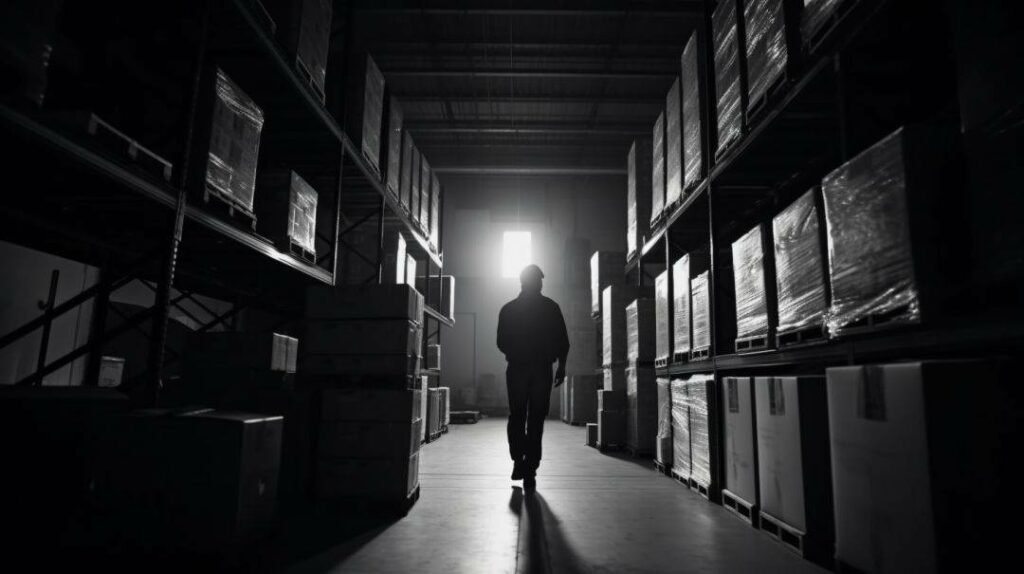
Warehouse security has become a top priority for companies of all sizes. With rising rates of theft, accidents, and liability issues, firms cannot afford to skimp on safety. A sound warehouse security strategy is essential for protecting your inventory, employees, and bottom line.
Here are some of the top reasons to invest in comprehensive warehouse security:
Preventing theft – Both internal and external theft costs warehouses billions annually. Security cameras deter potential thieves while catching those in the act. Maintaining chain of custody and access control also reduces shrinkage.
Mitigating safety risks – Warehouses involve heavy machinery, vehicles, and inventory that can pose safety hazards. Security cameras help managers identify risks and accidents so they can make improvements.
Meeting insurance requirements – Insurance providers offer discounts for firms implementing approved security systems. Avoiding claims also helps lower premiums.
Enforcing security protocols – Security cameras provide oversight to ensure employees and visitors follow all rules and procedures. Accountability improves compliance.
Streamlining operations – Security cameras paired with warehouse management software optimize workflows. Managers can spot inefficiencies and bottlenecks.
Limiting liability – Comprehensive proof of proper protocols limits liability for accidents and violations. Cameras protect warehouses from false claims.
Responding to emergencies – Live feeds allow security teams to remotely monitor emergencies and dispatch help faster.
Protecting assets – In addition to inventory, security cameras also deter vandalism and protect equipment, vehicles, supplies, and electronics.
With so much to gain, every warehouse manager should make security a priority. A robust camera system is the foundation of an effective security strategy. Keep reading to learn about the types of cameras suited for warehouse environments.
Types of Warehouse Security Cameras
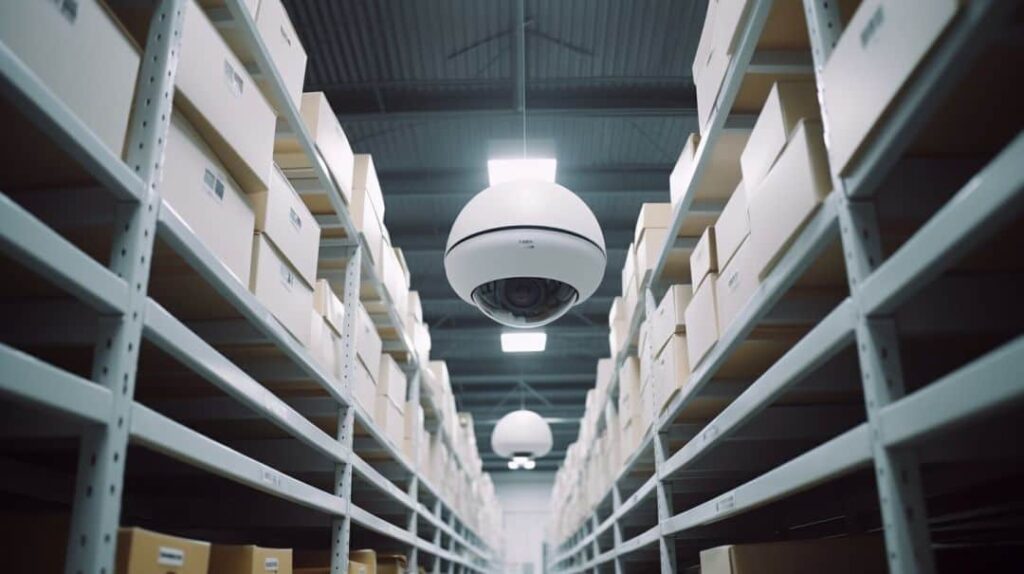
Warehouses present challenging environments for security cameras with high ceilings, dim lighting, dust, moisture and extreme temperatures. Thankfully, manufacturers offer ruggedized cameras designed to withstand these conditions.
There are four main types of security cameras ideal for warehouse installation:
Dome Cameras
Dome cameras feature a rounded external shield. This dome casing protects the pan-tilt-zoom (PTZ) camera inside. The dome shape makes it difficult for passersby to see which direction the camera lens is facing. This makes dome cameras more discreet. The enclosed design also protects the internal components from dust, dirt and potential vandalism.
Bullet Cameras
Bullet cameras get their name from their long, tubular shape. The cylinder protrudes from the wall to provide optimal viewing angle coverage. Bullet cameras are easily mountable and typically cost less than other designs. Their shape also makes them obvious as a crime deterrent, though it also exposes the lens.
Turret Cameras
Turret cameras offer the combined benefits of dome and bullet cameras. They feature a bullet camera enclosed within a transparent dome casing. The dome protects the lens while the cylindrical shape allows for diverse mounting options and wide angle views.
360 Degree Cameras
360 degree cameras, also known as fisheye cameras, use ultra wide angle lenses to provide a complete panoramic view. Just one fisheye camera can cover an entire room. The circular footage captures can be dewarped through software to view specific areas in detail.
Warehouse managers should use a combination of camera styles to maximize visibility. Focus dome and turret cameras on ingress/egress points, inventory aisles and loading docks. Place bullet cameras on perimeter fences and corners. Use 360 cameras to monitor open spaces like lobbies and storage floors.
Now that we have covered the main camera options, let’s look at other critical components of a video surveillance system.
Components of a Warehouse Security System
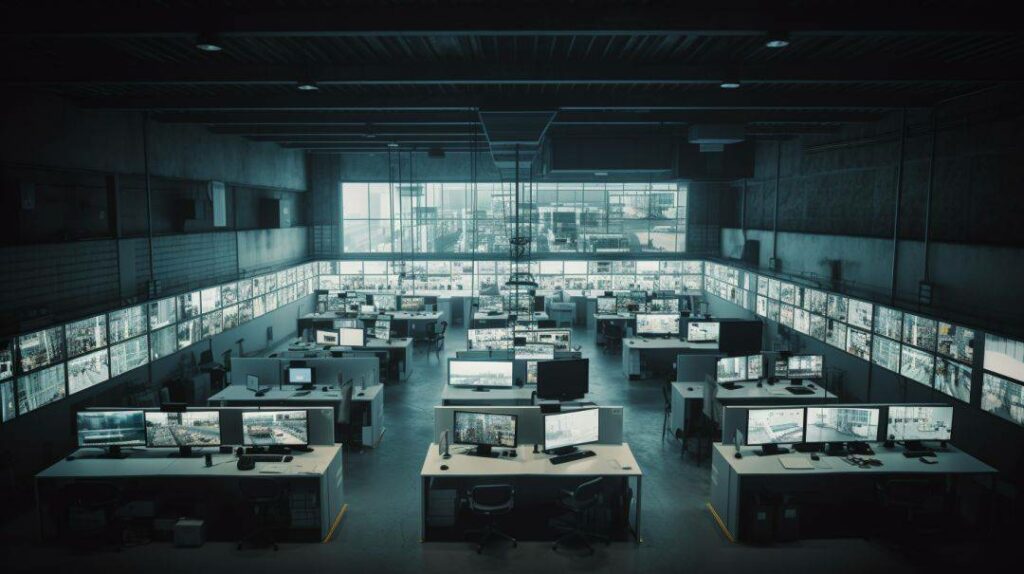
A security camera system is most effective when integrated with other security and warehouse management systems. Here are some of the key components of a robust warehouse security setup:
Cameras – The security cameras provide video surveillance to capture activities throughout the facility. A combination of fixed and PTZ cameras is ideal.
Data Storage – Large enterprises need network video recorders with ample data storage capacity to retain high definition footage from multiple cameras.
Internet – Wired and wireless networks connect the cameras to the digital recorders and remote monitoring platforms.
Video Analytics Platform – Analytics software enhances monitoring capabilities by detecting anomalies and triggering alerts.
Alarm Systems – Alarm systems like motion detectors, entry sensors, glass break detectors and indoor/outdoor sirens bolster security.
Access Control – Access control systems manage employee and visitor ingress with badge scanners, PIN codes or biometric data.
Inventory Tracking – Integrating video with warehouse management and inventory control systems provides greater oversight.
Security Doors/Cages – Secured inventory cages, locking doors and armored windows prevent unauthorized access.
Lighting – Proper lighting deters criminals while ensuring cameras can capture clear footage at night.
Security Guards – On-site guards and patrols act as an immediate emergency response resource.
An integrated system combining surveillance equipment with inventory systems, alarms and access control maximizes safety. With the infrastructure covered, let’s explore why HD cameras are so valuable for warehouses.
Benefits of a Warehouse Security Camera System
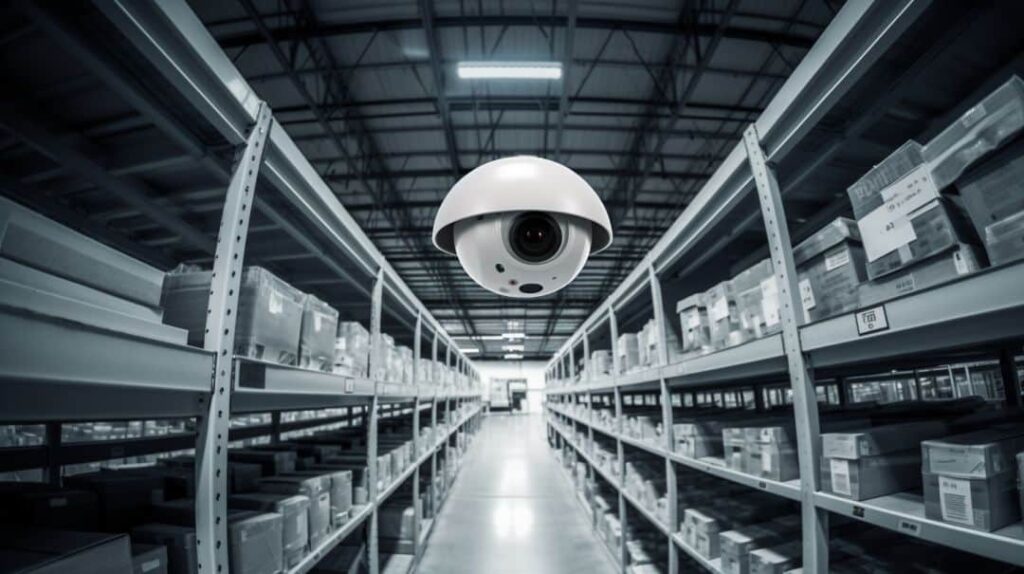
Installing a high-definition security camera system provides the following advantages:
Increased security – HD cameras deter theft and vandalism while providing irrefutable video evidence to aid investigations and prosecutions.
Improved safety – Live monitoring and recorded footage helps warehouse managers identify risks, accidents and areas needing improvement.
Boosted efficiency – Security video analytics reveal workflow bottlenecks and inefficient practices so managers can optimize operations.
Remote monitoring – Networked cameras allow off-site security teams to surveil the premises at all hours.
Alarm verification – Footage verifies whether triggered alarms represent a real threat or false alarm.
Documenting events – Video footage provides authoritative documentation of incidents, inventory logs and transactions.
Enhanced access control – Integrated camera feeds can validate badge scans or PIN code entries at secured access points.
Emergency response optimization – Instant access to feeds allows security staff to assess emergencies and dispatch help faster.
Reduced insurance premiums – Insurers offer lower rates for warehouses implementing approved security systems.
Liability protection – Documented evidence of protocols being followed reduces liability for incidents.
These benefits demonstrate why HD security cameras deliver an impressive return on investment. We will cover additional ROI boosting benefits in a later section. Next let’s examine the types of threats facing warehouses.
Types of Threats in Warehouses

Warehouse managers need to protect against a diverse range of potential threats including:
External theft – Break-ins, robbery, and organized crime targeting inventory and assets. Perimeter security and access control are key defenses.
Internal theft – Employee theft through staging slip and falls, hiding merchandise, or manipulating records. Oversight and inventory management deter insider threats.
Safety and OSHA – Preventable accidents like forklift collisions or unsafe practices violate standards. Cameras identify risks.
Natural disasters – Severe weather, floods or earthquakes can damage structures and inventory. Early alert systems and cameras speed response.
Human threats – Workplace violence, vandalism or arson threaten employee safety and warehouse integrity. Rapid incident detection is critical.
Supply chain disruption – Network outages, delivery failures or supply shortages disrupt operations. Enhanced visibility facilitates quick adaptations.
Cyber attacks – Hackers can target inventory control systems and cripple warehouse networks. Robust cybersecurity is essential.
A diverse security camera system tailored to your specific risks and budget offers the best protection on all fronts. Understanding the potential threats is the first step toward mitigating vulnerabilities. Next we will explore how security cameras work.
How Warehouse Security Cameras Work
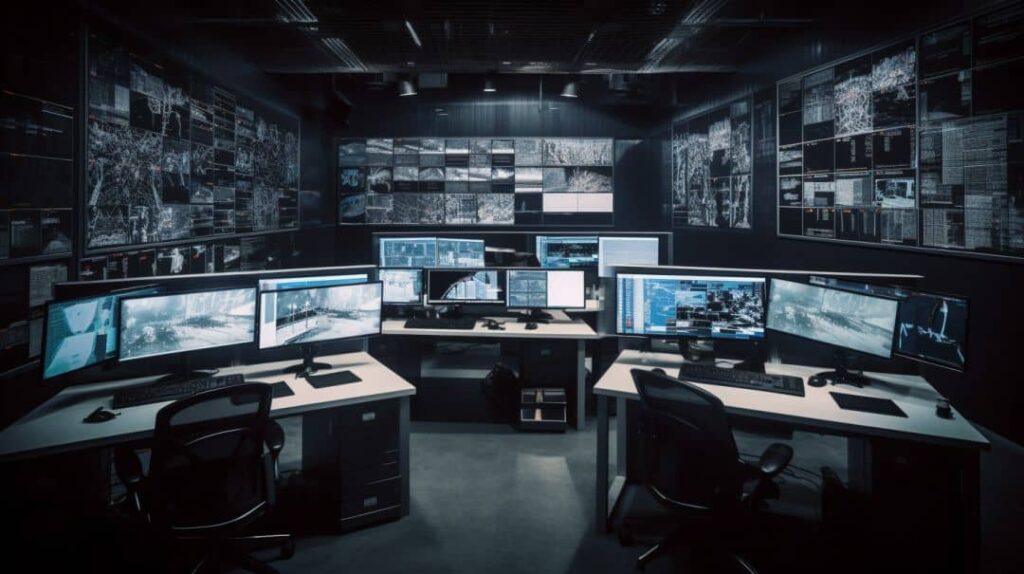
Modern warehouse security cameras have advanced imaging capabilities but operate on a simple principle.
- A lens captures light and focuses it onto a small image sensor inside the camera.
- The image sensor measures variations in brightness and converts the information into a digital video feed.
- Built-in processors compress the video for efficient storage and transmission.
- Cables or wireless networks transmit the footage to a recorder or remote viewing station.
- Sophisticated cameras include microphones to capture synchronized audio.
- Infrared LEDs allow night vision by emitting non-visible light detectable by the image sensor.
- Wide dynamic range and high definition capabilities enhance image clarity and detail.
- Rugged casings protect the sensitive optics and electronics.
- Key features like pan/tilt/zoom, motion tracking, or 360° views provide expanded coverage.
Understanding the fundamentals helps when selecting and positioning cameras. Next we will go over the top features and capabilities to look for when choosing security cameras for your warehouse.
Key Features to Consider When Choosing a Warehouse Security Camera System
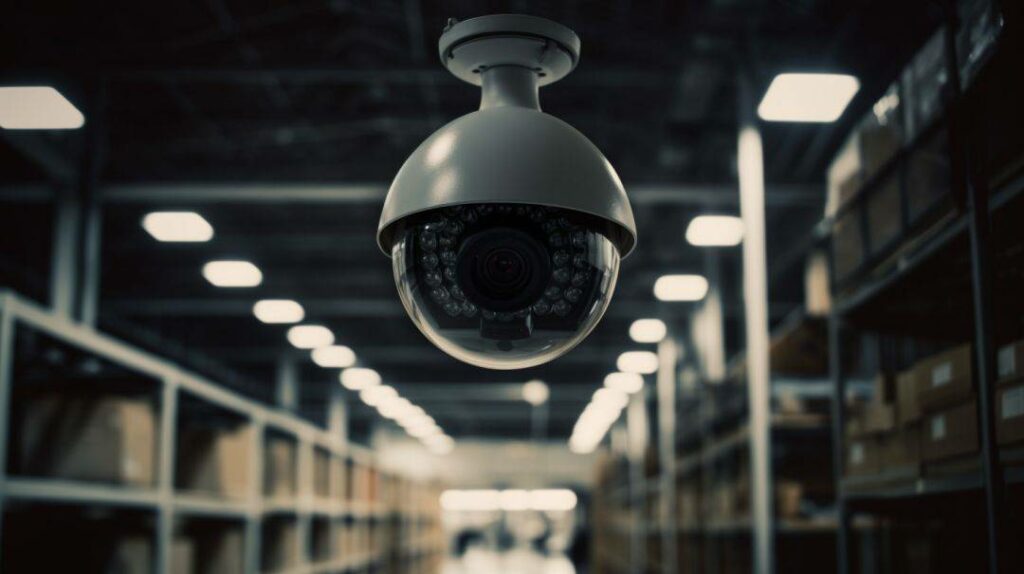
When selecting a security camera system, keep the following key features in mind:
Ruggedized design – Cameras must withstand dust, moisture, impacts and temperature swings common in warehouses. Look for industrial-grade units with durable metal housings and vandal-proof casings.
Remote access – The ability to view footage from any internet-connected device maximizes monitoring flexibility. Ensure cameras can integrate with dedicated mobile apps.
High definition footage – HD cameras with at least 1080p resolution capture critical details like faces and license plates. Advanced 4K and 5K units provide enhanced clarity.
Night vision – Infrared illumination enables clear nighttime footage. Choose cameras with 25-50 feet of IR range.
Wide dynamic range – WDR tech ensures usable footage even in high contrast environments with bright spotlights and deep shadows.
Intelligent video analytics – Analytics like motion detection, object tracking, and scenario analysis help operators sift through footage smarter.
Easy installation – Look for corner or ceiling-mount cameras with adjustable mounting brackets and wiring conduits to simplify installation.
Easy management – User-friendly camera dashboard apps minimize training and maximize functionality for operators.
Prioritize cameras offering the best imaging, ruggedness, intelligence and convenience within your budget. Now let’s examine some top-rated options on the market.
Top Warehouse Security Camera Systems
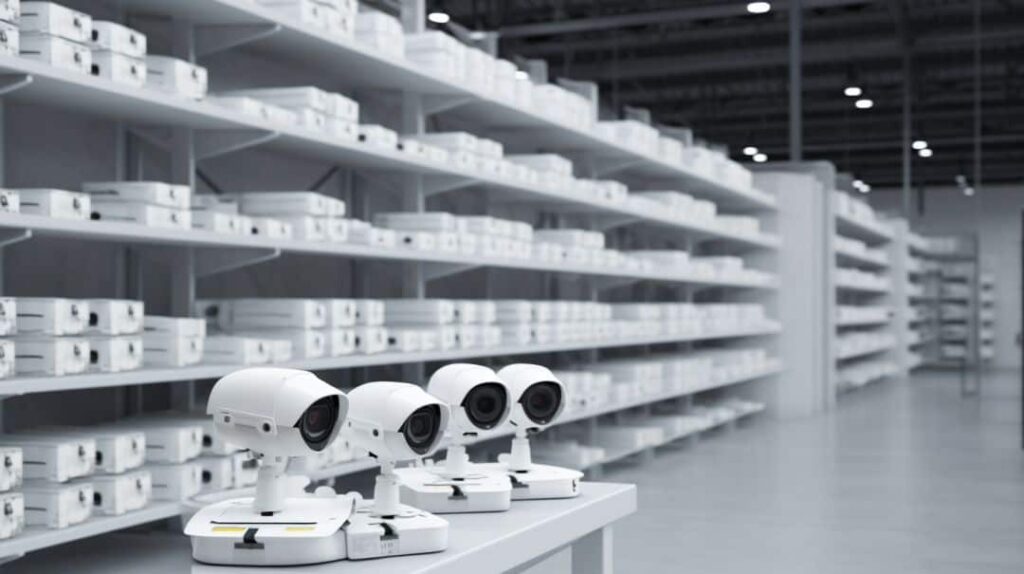
When choosing a security camera system, stick with leading brands offering robust solutions tailored for warehouses. Here are three top-rated options:
Meet Site Visibility
Meet Site Visibility designs advanced camera networks for large-scale facilities. Their systems integrate high definition cameras with intelligent analytics software to optimize security and operations. Motion tracking PTZ cameras boost monitoring capabilities.
Samsara
Samsara offers complete industrial IoT solutions combining AI-powered cameras with warehouse management and inventory control systems. Their ruggedized cameras capture clear footage in any lighting conditions.
Solink
Solink creates hybrid cloud-based security networks ideal for warehouses. Their systems support a mix of analog and IP cameras. Advanced cameras boast 4K resolution, night vision, and built-in intelligence.
These platforms provide the imaging, intelligence, and integration essential for comprehensive warehouse surveillance. On-site surveys help firms choose designs matching their unique needs.
Now that we have covered the critical components of a video security system, let’s examine how these elements can improve warehouse safety, security and performance.
How Warehouse Security Cameras Can Improve Site Security, Performance, and ROI

Installing a tailored security camera system provides the following operational and financial benefits:
- Wide area coverage – Strategically placed cameras eliminate blind spots across the entire premises.
- Night guarding – Infrared cameras allow 24/7 monitoring regardless of lighting conditions.
- Employee compliance – Footage verifies adherence to safety protocols and deters violations.
- Energy management – Analytics identify optimization opportunities to reduce energy waste.
- Cloud integration – Cloud-enabled cameras facilitate seamless data sharing and remote monitoring.
- Crime deterrence – Visible cameras dissuade potential thieves and vandals.
- Analog integration – Retaining older analog cameras while upgrading to IP-enabled models reduces costs.
- Demand forecasting – Integrating camera data with Warehouse Management Systems improves demand planning.
- Remote surveillance – Users can surveil the facility from any mobile device.
- Inventory management – Tighter controls and oversight enabled by cameras prevent stock loss.
- Reduced insurance – Documented safety protocols result in lower premiums.
- Incident response – Instant access to camera feeds accelerates emergency responses.
- Loss prevention – Cameras protect merchandise, equipment and facilities from theft and damage.
The combined benefits of improved security, streamlined operations, and prevented losses provide an impressive ROI. HD cameras are a wise investment for warehouses of all sizes.
Conclusion
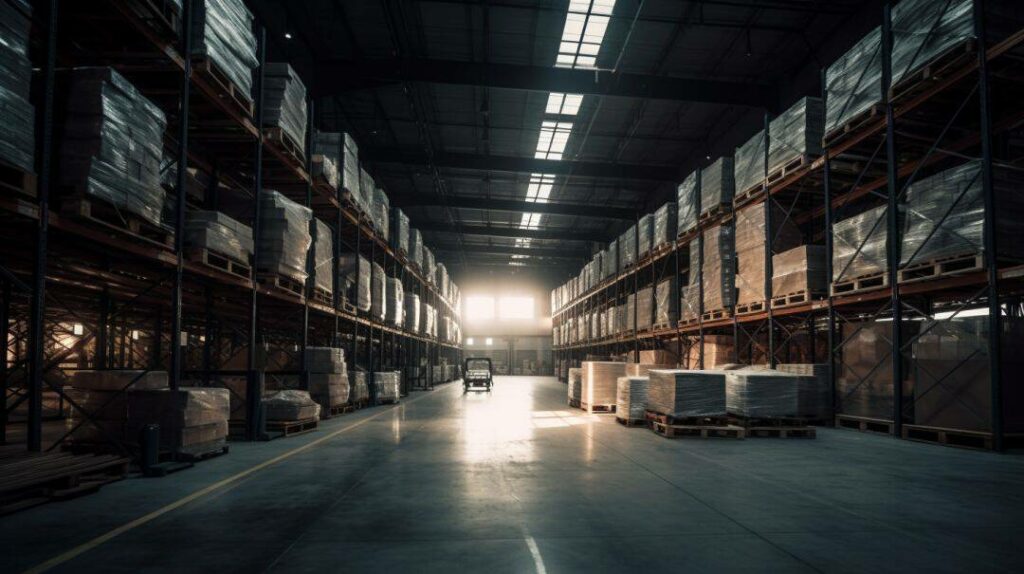
Warehouses face immense threats from theft, accidents, and disruptions that can jeopardize operations and inventory. A robust security camera system is the most effective way to protect your assets.
High-definition security cameras provide unmatched visibility into every corner of your facility. Advanced camera features like low-light imaging, motion tracking and remote access empower security teams. Integrated access control and alarm systems add additional protection.
An optimized camera network deters criminals, reduces shrinkage, improves safety, and optimizes workflows. The combined benefits help warehouses maximize ROI through loss prevention, insurance savings, enhanced productivity and proactive maintenance.
When designing your video surveillance system, choose leading camera platforms offering intelligent integrations tailored to your needs. Investing in high-definition warehouse security cameras pays dividends through strengthened security, streamlined operations and ultimately, peace of mind.
To learn more about securing your warehouse with a customized video surveillance system, contact Jefferson Security Systems at (267) 662-1423 or visit https://jeffersonsecuritycameras.com/. Jefferson Security Systems offers free security assessments and design services to help you protect your assets. Get a Quote for your warehouse security camera system today.
FAQs
Why are security cameras so important for warehouses?
Security cameras help deter theft, improve safety protocols, optimize operations and protect inventory. Surveillance is the foundation of a robust warehouse security strategy.
What types of security cameras work best in warehouses?
Choose ruggedized IP camera models like turret, dome and bullet cameras with HD resolution. Models with IR night vision, wide dynamic range and vandal-resistant designs are ideal.
How many security cameras do I need for my warehouse?
The number of cameras needed depends on the size and design of your warehouse. Plan for overlapping coverage with no blind spots at entry points, loading areas, aisles and perimeters.
What features should I look for when choosing security cameras?
Prioritize HD resolution, night vision, wide dynamic range, intelligent video analytics, durability and remote access. Ensure cameras integrate well with other systems.
What is the benefit of high-definition security cameras over standard definition?
The enhanced resolution of HD cameras allows capturing of critical details like faces, license plate numbers and text. This improves incident investigations and risk management.

